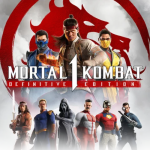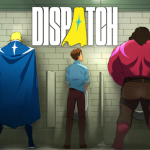Time Spent, Power Earned: The Blood of Dawnwalker’s 30-Day Gambit

There’s a particular thrill in hearing a designer reframe a familiar system, and The Blood of Dawnwalker does exactly that by turning time into your primary tender. Led by a CD Projekt Red veteran, this vampire RPG anchors its entire campaign to a hard 30-day window, asking you to treat every hour like a coin you either invest or waste. The hook is not simply pressure for pressure’s sake; it’s about authorship. You choose when to prowl, when to regroup, when to court allies, and when to let the city breathe so patterns emerge. That agency is empowering and unnerving at once. Every decision is a purchase with minutes, and the receipt is printed in consequences: a lead grows cold, a rival ascends, a district tightens security, an informant relocates. The promise is a reactive playground where your schedule writes the story, rather than a checklist that waits politely for you to arrive. If you crave strategy woven into narrative, this premise is pure oxygen.
Main Part
The core loop treats time accounting like buildcraft. Travel across districts, interrogate a suspect, brew an alchemical tincture, case a manor’s guard routes—each action carries a clear duration and a forecast of knock-on effects. Night and day are not palette swaps; they are different economies. Some doors only open under moonlight, some witnesses only feel brave at dawn, and certain contraptions hum to life at specific hours. You can consciously bank hours by resting in safe havens or burn them to bait bigger opportunities, such as waiting for a courier’s predictable pass or engineering a festival distraction. Systems layer elegantly: rumors propagate on a schedule, patrols rotate, market inventories refresh, and faction leaders keep appointments that you can learn, disrupt, or leverage. The more you study the city’s calendar, the richer the dividends. Importantly, nothing is frozen for your convenience; the world keeps appointments even if you do not.
Character growth, too, is knotted to the clock. Crafting potent gear requires reagents that appear in narrow windows or in territories where presence after sunrise is a dangerous gamble. Social builds benefit from carefully timed introductions and favors; brute force approaches amplify risk if you ignore how alert levels rise across consecutive nights. Feeding is treated as a resource loop with ethical and strategic layers, where targets, cover stories, and heat management matter as much as raw stats. Investigations evolve as time passes, with clue chains branching if you arrive early, late, or precisely on schedule. Side threads do not exist as filler; they are problem spaces that pay out in access, intel, or mobility upgrades, enabling you to compress future tasks. The game rewards planning with compounding interest: a well-spent evening can rearrange the board for several days, transforming a daunting objective into a surgical strike of minutes instead of hours.
All of this is wrapped in a city that feels authored yet systemic. Districts have identities and power brokers, each with quirks you can route around or court. A church bell signals more than ambience; it can be a meeting you intend to crash or a curfew that reshapes routes. Informants keep rituals, merchants host clandestine auctions, and archivists unlock their stacks only when supervised staff rotate in. As you map these rhythms, you begin to see calendars rather than quest markers. Fail states are not the end of the world so much as a debt you must service later; a botched intrusion may mean a leader postpones a coronation, giving you a second swing at sabotaging it, at the cost of precious evenings elsewhere. Dialogue and deception are tools for buying time just as surely as movement speed or stealth perks, which makes hybrid builds compelling: you maneuver through both social and physical space, squeezing efficiency from your route like a speedrunner with a conscience.
Conclusion
What makes The Blood of Dawnwalker exciting is not only the 30-day limit, but the philosophy behind it: the clock is your wallet, and the designers keep minting interesting ways to spend it. That clarity turns planning into play, not homework. You learn to budget nights for reconnaissance and set aside daylight hours for crafting, clue synthesis, or quiet manipulation of contacts. You will miss things—by design—and that absence gives shape to your version of the city. It promises strong replay value, because different schedules reveal different faces of the same story. If you want a practical approach, think in loops: define one objective per night, one contingency if that slips, and one investment that makes tomorrow faster. Prioritize mobility, intel, and safe routes, then let your build express your tolerance for risk. If the execution matches the vision, this could be that rare RPG where time management feels less like a leash and more like a superpower.
















